
The Inca Trail is a route full of adventure, history as well as flora and fauna. The Sernanp (National Service of State Protected Natural Areas) has reported approximately 13 species of fish, 12 species of amphibians, 22 species of reptiles, 423 species of birds and 53 species of mammals. Only in Machu Picchu, the final destination of the route, stands out the presence of animals such as llamas, giant hummingbirds, cock-of-the-rock and, occasionally, the famous Andean bear.
Glasses bear
Its scientific name is tremarctos ornatus. It is also known as Andean bear. It inhabits humid forests where there are trees and water abounds.
The spectacled bear is herbivorous (only 4% of its diet is non-vegetarian). It has solitary habits. It can measure up to 2.2 meters on two legs. It is characterized by having white spots around its eyes. Due to this characteristic it receives its name.
This animal is linked to myths and legends that consider it a ‘totem’. It is related to some Andean folk dances, where it is known as ‘the ukuku’, son of an Inca princess with a bear.
The spectacled bear can be seen during the Inca Trail. It is not an animal that usually attacks humans. Even so, if you come across one, it is best to move away and take pictures from a distance.

Glasses bear
Andean cougar
Its scientific name is colored puma. It inhabits almost the entire American continent, so it is known in different ways, depending on each region (it is also called mountain lion, American lion or simply cougar).
The territory of the Andean puma extends from Canada to the end of the Andes Mountains. They can also occupy territories above 5 thousand meters of altitude and the South American tropical forests.
Unlike other felines such as the lion, this one only purrs. Their food source is camelids, rodents and even insects. Despite the human invasion in its territory, the Andean puma prefers to avoid contact with men.
During the Inca Trail it is very rare to come across an Andean puma. These usually move away from the roads made by men and occupy the mountainous areas of Cusco. In case you run into one, just back away slowly, make noises and try to chase it away.
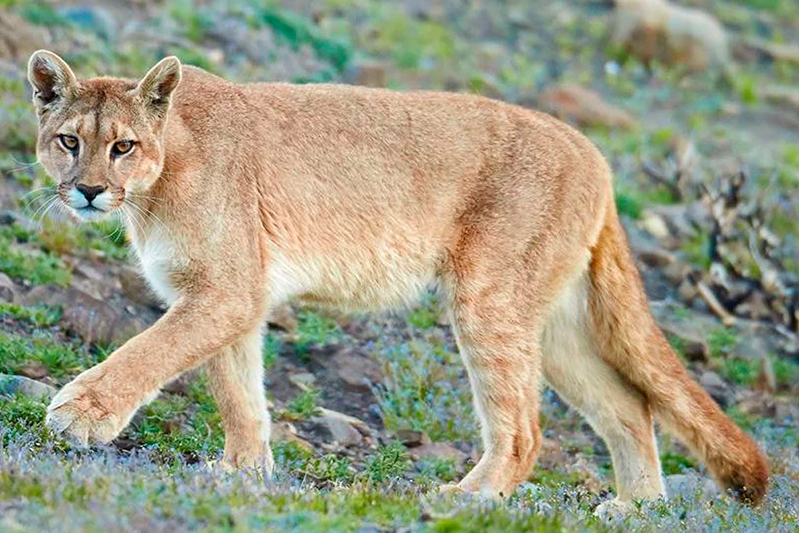
Andean cougar
Andean condor
Its scientific name is vultur gryphus. It is the second largest bird on the planet, only after the albatross. In length it can reach 1.42 meters while with its wings stretched it can reach 3.30 meters in wingspan.
Its natural habitat is the Cordillera de los Andes (mountains of Peru, Ecuador, Bolivia, Colombia, Chile, Venezuela and Argentina). It feeds mainly on carrion. It is characterized by its large size, black wings and its great sense of smell and sight.
The condor can travel great distances in a short time, from heights of 6,000 meters above sea level to the coast of the Pacific Ocean. It is currently considered a ‘near threatened’ species.
During the Inca Trail it is not very common to see condors, although it is possible, especially on the first day of the trip.
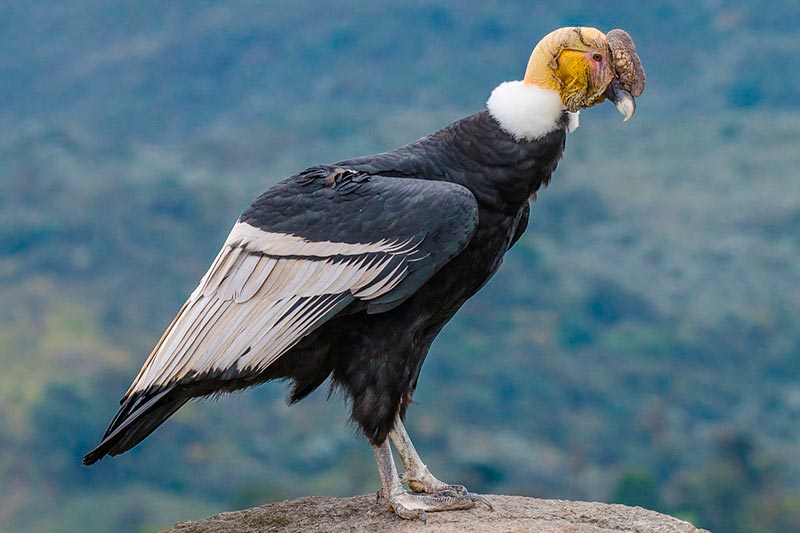
Andean condor
Taruca or Andean deer
Its scientific name is Hippocamelus antisensis. It is an endangered deer that inhabits the Andean escarpments. It moves through the forests from 1,500 meters of altitude to 3,200 meters.
It is known as the Andean deer. It is a slender animal that can reach 80 centimeters in height and has short fur and small horns.
It uses its hooves to climb through the Andean forests. They are elusive animals of people. They can live 14 years.
During the Inca Trail, especially on the last days of the trek, it is possible to see them hidden in the woods. However, these animals often quickly escape when they spot humans.
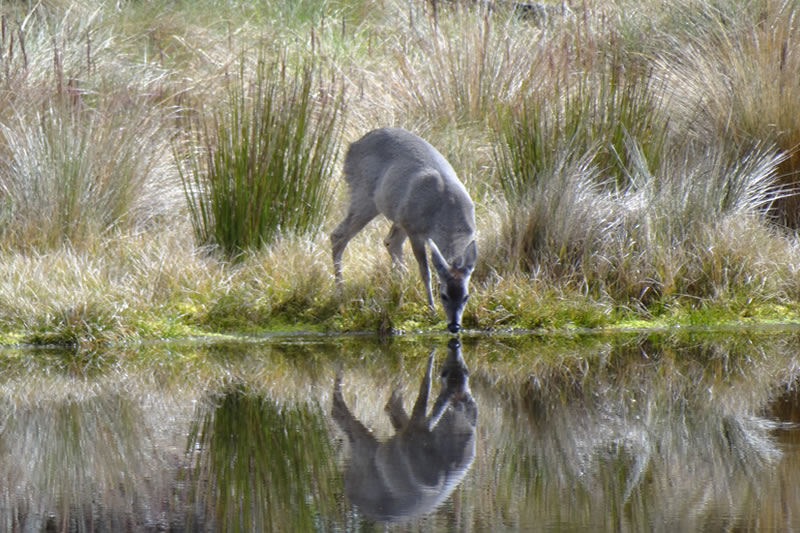
Taruca or Andean deer
River otter
Its scientific name is lontra longicaudis. It is also known as the ‘northwest otter, neo tropical otter or water dog. It inhabits the mighty rivers of Central and South America.
This carnivorous mammal is located in mountainous regions up to 3 thousand meters above sea level. In Machu Picchu it can be seen in the rainy season when the Urubamba River rises. Its body reaches 2 meters in length.
The river otter is a threatened animal due to the depredation of its habitat due to population growth and the exploitation of wood.
On the Inca Trail it can be seen in the distance, resting on the rocks of the Vilcanota River during the last days of the trek.

River otter
Cock of the rocks
Its scientific name is peruvian rupicola. It is considered the national bird of Peru. It inhabits the Andean-tropical regions of South America. The male specimens have a reddish and black coloration of great beauty.
In other South American countries it is also called ‘gallito de las sierras’ (Venezuela), Andean rooster of the rock (Ecuador) or Andean rooster of the rock (Colombia). Their name is related to their nests on rocky cliffs far from predators.
The cock-of-the-rock is often seen on the way from Aguas Calientes to the Mándor falls. It measures 32 centimeters long. The male has very bright colors between red, orange and black, while the female is only gray. It is a solitary and silent bird, during the mating season, about 50 males gather on the rocks, to be chosen by the female.
During the Inca Trail it is possible to observe them on the last and penultimate day, on the mountain cliffs hidden among the vegetation.
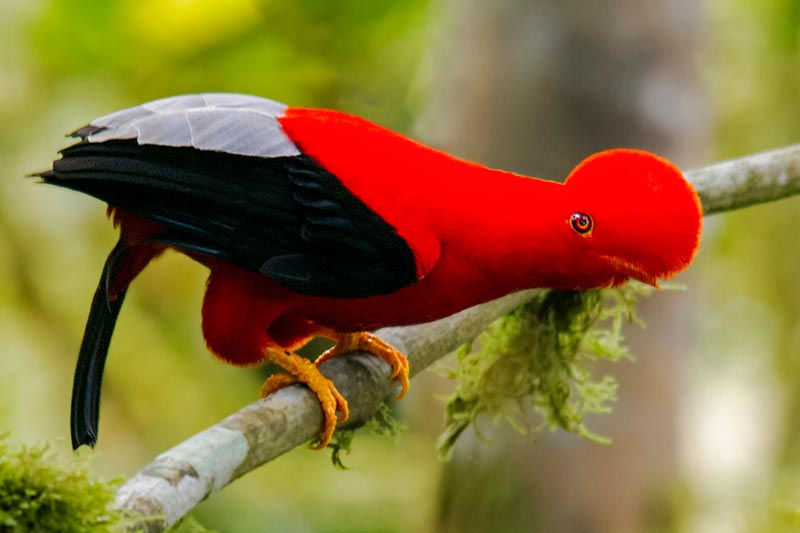
Cock of the rocks
Royal churrete
Its scientific name is cinclodes aricomae. Endemic bird of Peru that inhabits polylepis forests on slopes in scarce tropical forests and mountainous regions of Peru and Bolivia. It prefers mountainous regions from 3,500 to 4,800 meters above sea level.
It has a brown color with white spots on the eyes. It measures 22 centimeters and is critically endangered because its population is small.
This bird is widely seen along the Inca Trail and throughout the Historic Sanctuary of Machu Picchu.
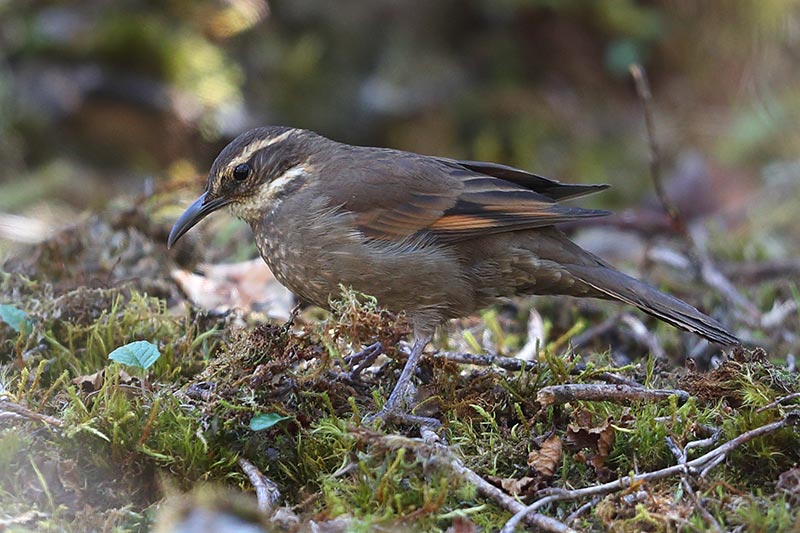
Royal churrete
Duck of the torrents
Its scientific name is merganetta armata. It is also known as the torrentero duck or torrential duck. It inhabits fast-flowing rivers in the Andes Mountains. It prefers altitudes between 1,500 and 4,500 meters above sea level.
In the Historic Sanctuary of Machu Picchu it is usually seen in the rainy season (between November and April). It has a showy plumage, red beak and red legs in the male while yellowish in the females. It measures between 38 to 46 centimeters.
It has a showy plumage, red beak and red legs in the male while yellowish in the females. It measures between 38 to 46 centimeters.
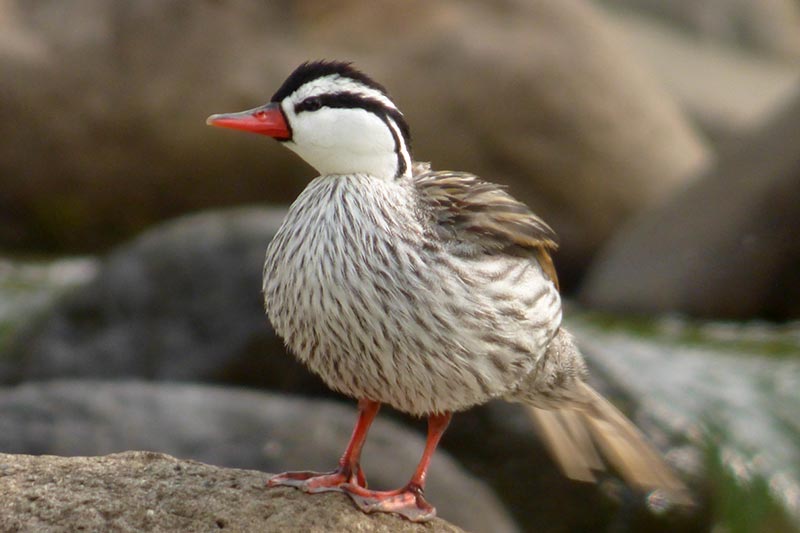
Duck of the torrents
Andean Jergon
Its scientific name is Bothrops andianus. It is an endemic species of poisonous snake. Adults normally measure between 60 to 70 centimeters.
It inhabits tropical mountainous regions of Cusco and Puno in Peru. It prefers habitats between 1,800 and 3,300 meters above sea level.
It has a brown and lead coloration that easily mimics them. However, they do not usually crawl along the trails of the Inca Trail (in the forests restricted to visitors). In case you come across one, it is best not to bother her and follow the path.
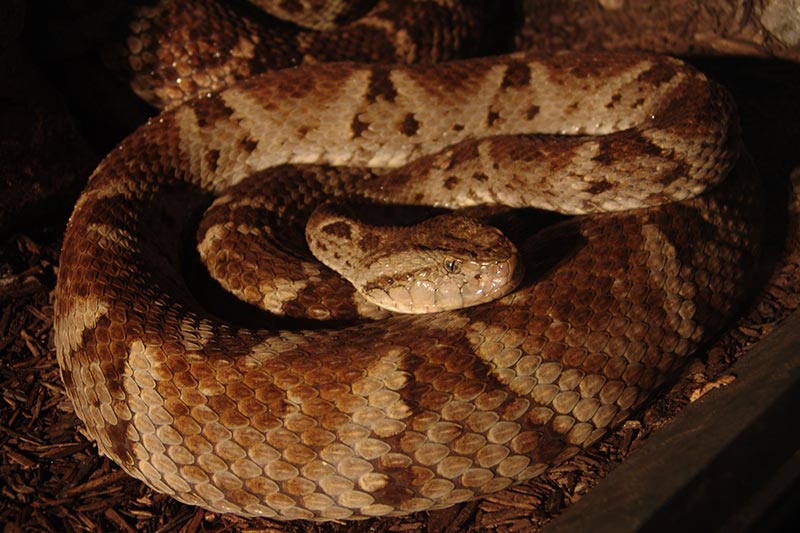
Andean Jergon
Andean frog
Its scientific name is telmatobius. It is a genus of amphibians that have more than 64 species, many of which are endemic. They inhabit the Andean mountain range, mainly in the tropical mountainous geographies of Peru, Bolivia, Ecuador as well as northern Chile and Argentina.
This aquatic frog measures from 53 to 67 millimeters. It has an orange coloration. It lives in wetlands, springs and streams. In the Historic Sanctuary of Machu Picchu there are several species, many of which are in danger of extinction.
Along the Inca Trail it is possible to see them, especially in the streams during the rainy season (mainly in January, February and March).
Giant Hummingbird
Its scientific name is patagona gigas. As its name suggests, it is the largest hummingbird on the planet, as it can reach more than 18 centimeters. There are two registered subspecies: the Chilean and Argentine giant hummingbird as well as the Peruvian giant hummingbird.
This last subspecies inhabits tropical Andean regions such as the Historic Sanctuary of Machu Picchu. They can be seen in regions from 1,500 to 3,500 meters above sea level. Its brown and white color stands out. Their flight is not as fast as common hummingbirds. It is not in danger of extinction.
Along the Inca Trail it is possible to appreciate the giant hummingbird during the four days of walking.
butterflies
Butterflies ‘lepidoptera’ abound during the Inca Trail. There are species of many types of colors. It is estimated that in the Historic Sanctuary of Machu Picchu there are more than 500 species of butterflies.
The Sernanp reports that 10% of existing butterflies in Peru are found in Machu Picchu and the Inca Trail. On the hiking trail they are most often seen during the last days of the hike (they preferably live between 1,800 and 2,000 meters above sea level.
Llamas
The scientific name for llamas is Lama glama. This mammal belonging to the ‘camelidae’ family inhabits the cold and mountainous regions of the Andes Mountains in countries such as Peru, Bolivia, Chile, Ecuador, Colombia and even Argentina.
Llamas are domesticated. The Incas used it as cargo transport and for the quality of its wool. Its meat is also edible.
During the Inca Trail they are not visible until the end because in Machu Picchu there are twenty llamas grazing through the archaeological site. Tourists can be photographed with one, as long as it does not disturb them.
Llamas are docile and curious animals that like to get close to humans. However, if they feel threatened they defend themselves by spitting.
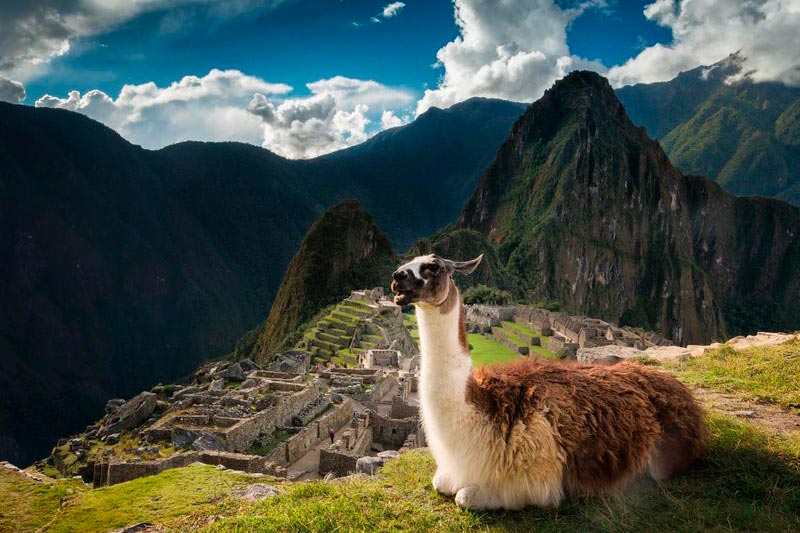
Llamas
By Inca Trail Machu Picchu - Last updated, 22-08-2024
Interested in the Inca Trail? Know more about Nature!
- Coca leaf, ideal for trekking in Peru
- The Cantuta flower. Where to find it on the Inca Trail?
- Spectacled bear on the Inca Trail to Machu Picchu
- The cock of the rocks on the Inca Trail
- Inca Trail: butterfly observatory
- Warmiwañusca Mountain Pass
